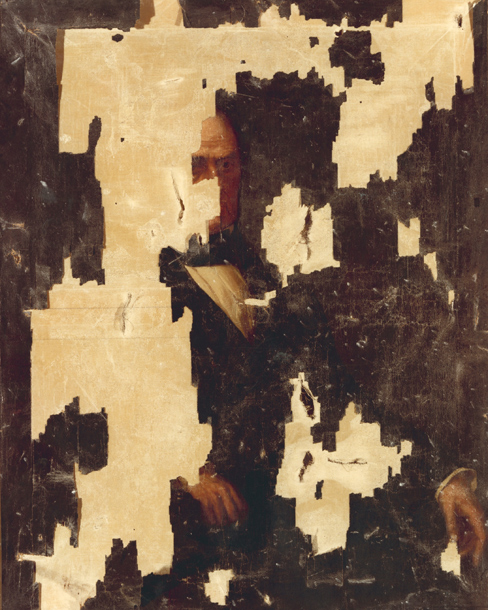Sesame Street (and the Nobel Committee) is honoring the Count for counting (but he can't seem to make it to Sesame St.)
This was recently done a tribute to the original actor who voiced the Count, Jerry Nelson.
November 7, 1955 -
The neo-realist film classic, Umberto D., was released in the US on this date.
There are two dogs used in the film. The trained one has a black head and its right side is white. Another dog, with a white muzzle and a black spot on its right flank, is used in two scenes - firstly, when Umberto is hiding from the police after the demonstration and, secondly, when he reclaims Flike from the pound.
November 7, 1956 -
An early masterpiece from Fellini, I Vitelloni, was released in the US on this date.
At the end of the film, when Moraldo is saying good-bye to the young boy from the train, his "Good-by, Guido" is actually the dubbed voice of director, Fredrico Fellini. It is believed that Fellini did this to emphasize the fact that the film was autobiographical.
November 7, 1963 -
The comedy that features one of the largest collections of American comedians ever brought together, It's a Mad Mad Mad Mad World, premiered on this date.
With the death of Mickey Rooney on April 6, 2014, there are no surviving members of the main cast left.
November 7, 1979 -
Loosely based on the life of Janis Joplin, the film, The Rose, starring Bette Midler, was released on this date.
The movie was originally entitled "Pearl", which was a biographical movie based on Janis Joplin's life. When approached with the script for "Pearl", Bette Midler believed it was too soon after Joplin's death to portray her life in a movie. Rewrites were then made, with Midler's guidance, that deleted some portions of the original script and embellished other parts of the story. Then the rewritten script was named "The Rose" and Midler agreed to the lead role.
Today in History:
Maria Sklodowski was born in Warsaw, Poland, on November 7, 1867. Poland was controlled by Russia at the time, so Maria was referred to as Manya, causing her mother to die. This left Manya and her four older siblings in care of their father, who was caught teaching Polish and therefore prohibited from earning money.
To help support her father, Manya began tutoring a family in the country outside Warsaw. Her sister Bronya moved to Paris to study medicine and become a famous doctor, so Manya sent money to her, also. This allowed Bronya to marry another medical student and begin practicing medicine in Paris.
Bronya and her husband invited Manya to live with them in Paris and study at the Sorbonne, where she could call herself Marie. This appealed to the young woman, who quickly earned master's degrees in physics and mathematics. She enjoyed Paris so much she couldn't bear to return to Poland and to understand her attraction to Paris she began a study of magnetism.
To conduct her magnetism research she needed a larger lab, however, so she married a Frenchman named Pierre and used his. One of Pierre's friends had been experimenting with uranium, which piqued Marie's curiosity. She began experimenting with it herself, and ultimately discovered something she called "radio-activity." This eventually led to her discovery of radium, for which she received the Nobel Prize for Chemistry in 1911.
Marie Curie's research would eventually culminate in the development of the atomic bomb, but unfortunately she died before having the opportunity to see the full flowering of her hard work.
November 7, 1872 -
The cargo ship Mary Celeste sailed from New York, never reaching Genoa. Four weeks later it is found completely abandoned, whereabouts of the ten man crew unknown.
The ship's cargo was alcohol, so you decide.
November 7, 1874 -
The famous political cartoonist Thomas Nast (a staunch Republican) first used an elephant to symbol for the Republican Party on this date.
He choice the elephant because of the animal's great size, intelligence, strength, and dignity.
November 7, 1940 -
The newly completed Tacoma Narrows Bridge, opened barely four months before, swayed and collapsed in a 42 mile-per-hour wind on this date.
There were no casualties except a dog trapped in a car stranded on the bridge. A rescue was attempted (by the man with the pipe), but the frightened animal would not leave the car.
November 7, 1965 -
The Pillsbury Doughboy made its first appearance on this date.
You may refer to the creature as "it"; marketing may call it a Doughboy but there is no evidence of genitalia.
November 7, 1983 -
An anonymous phone called notified the White House authorities that a bomb had been placed close to the Senate chamber by the "Armed Resistance Unit" and was set to explode. The Senate chamber was empty at the time, and nobody was injured.
The bomb did, however, cause about $250,000 in damage. Six "Resistance Conspiracy" members were arrested for the bombing five years later.
A portrait of Daniel Webster, received the explosion’s full force. The blast tore away Webster’s face and left it scattered across the Minton tiles in one-inch canvas shards. Quick thinking Senate curators rescued the fragments from debris-filled trash bins. Over the coming months, a capable conservator painstakingly restored the painting to a credible, if somewhat diminished, version of the original.
Shhh, Bill Watterson has drawn a brand new comic (in honor of France's 2015 Angoulême International Comics Festival, if you must know.)
In an interview, Watterson said he drew his latest comic without text in order to break any language barriers. “Telling a story only in pictures is one of the great strengths — and greatest pleasures — offered by comics,” Watterson said.
And so it goes.






No comments:
Post a Comment